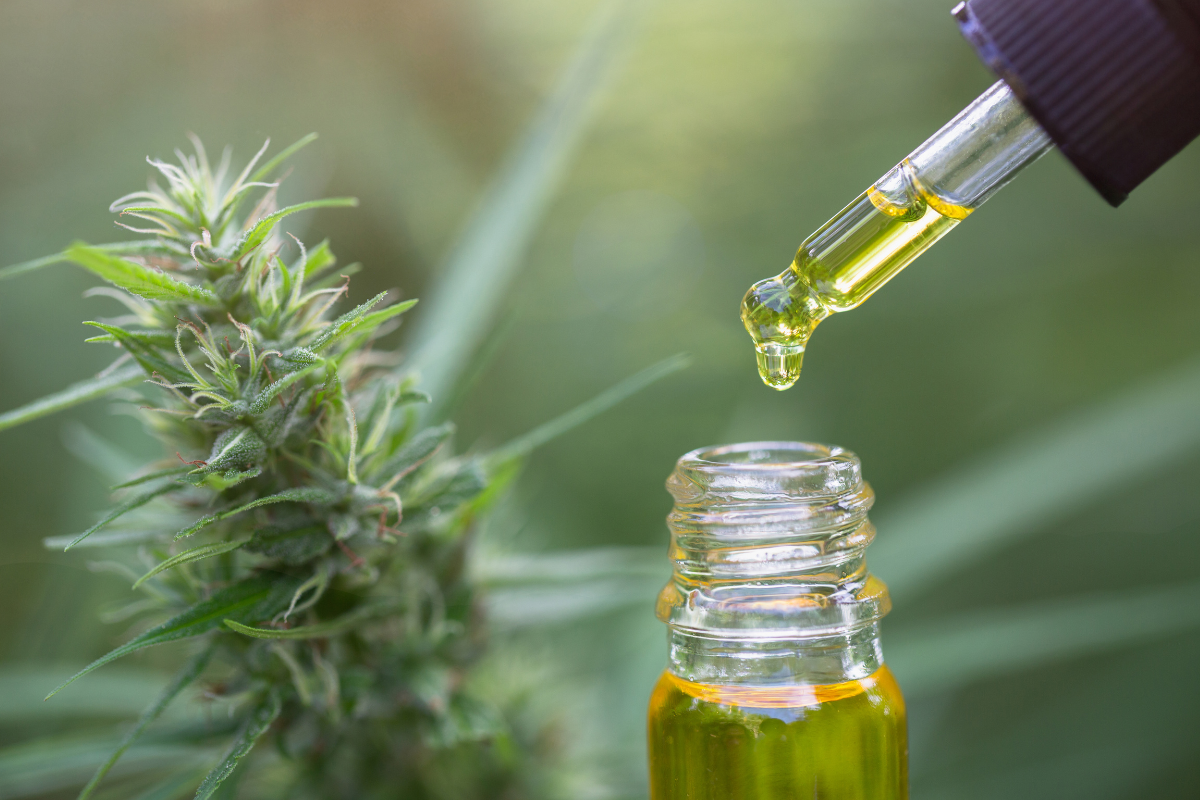

The cannabis (marijuana) plant has been used for both medicinal and recreational purposes for many centuries. Its reputation for giving the user a ‘high’ is well known but there have been few professionally recognised clinical trials on the benefits of cannabis products for medicinal use. This is largely due to cannabis use being prohibited in many countries until recent years.
A basic Google search brings up claims of cannabis products being used to treat and, in some cases, cure conditions like cancer, anxiety, depression, muscle spasms, fibromyalgia, arthritis, chronic pain and more.
Yet, how much of this is true?
The Cannabis Plant
The cannabis plant has around 400 molecules. More than 80 of these are known as “cannabinoids”. The plant also has many varieties, each with different concentrations of cannabinoids. This, plus varying types and standards of production, results in inconsistent effects when used.
Subclasses of cannabinoids include:
- Tetrahydrocannabinols (THC)
- Cannabidiols (CBD)
- Cannabigerols (CBG)
- Cannabichromenes (CBC)
- Cannabinol (CBN)
Cannabinoids bind to specific receptors within our central nervous system. Different cannabinoids interact with different parts of the brain including the areas that deal with memory, pain perception and feelings of reward.
THC is the most well-known cannabinoid and is also the most potent. This substance is primarily responsible for the psychoactive effects of cannabis. It is believed that some of the other cannabinoids, such as CBD, can counteract the effects of THC.
Medicinal cannabis (also known as medical cannabis or medical marijuana) is supplied in different forms, mainly derived from cannabis oil. They include topical creams, vape oils, tinctures, and tablets.
Hemp is from the same family of plants as cannabis. It contains CBD and other cannabinoids but only traces of THC so it is less potent than cannabis. Hemp oil products are legally available in Australia but are not controlled by the TGA and standards vary widely.
What Do We Know About Medicinal Cannabis?
Medicinal cannabis has been proven to be an effective form of treatment for severe epilepsy, muscle spasms, side effects from cancer therapy and palliative pain relief. However, the benefits of medicinal cannabis for other conditions have yet to be supported by substantial and reliable evidence from clinical trials.
In May 2022, our colleagues from CreakyJoints in the US published a review of current literature on cannabis for rheumatic disease pain in Current Rheumatology Reports. Their findings showed:
- Data supporting a role for cannabinoids in rheumatic disease continues to grow.
- Observational and survey studies show increased use of medicinal cannabis, both by people with rheumatic disease and the general population and suggest that patients find these treatments beneficial.
- Prospective studies, however, including randomised controlled clinical trials, are rare and sorely needed.
Access to Medicinal Cannabis in Australia
In 2016, the Australian Government via the Therapeutic Goods Administration (TGA) granted limited approval for the cultivation, manufacture and prescription of medicinal cannabis products.
Medicinal cannabis products are not available through the Pharmaceutical Benefits Scheme (PBS), However, authorised prescribers can apply to the TGA for access to unregistered products for very ill patients with specific medical conditions via the Special Access Scheme Category B (SAS-B).
Alternatively, doctors can suggest their patients for a clinical trial or refer them to a doctor more experienced with medicinal cannabis. Access laws vary from state to state.
Approvals are based on active ingredients rather than specific products or brands.
Prescriptions can only be filled in pharmacies and consumers must pay the full price. Prices can vary substantially from $50 to $1000 per patient per week, depending on the nature of the condition being treated, the product required and the prescribed dose.
Despite the lack of evidence, research published in Frontiers in Pharmacology in May 2022 showed that, as of 31 August 2021, a total of 159,665 prescription approvals had been issued for medicinal cannabis products in Australia. 82.4 per cent of these were since January 2020. Leading indications for approval were pain, anxiety, and sleep disorders.
Yet, according to the Australian Institute of Health and Welfare (AIHW) National Drug Strategy Household Survey 2019 – Emerging topic: Medicinal Cannabis, 11.7 per cent of people (or about 2.5 million Australians) aged 14 and over had used cannabis in the previous 12 months. The survey results also showed only 3.9 per cent of those who said they used cannabis for medical purposes obtained it by prescription.
Proceeding With Caution
The negative effects of medicinal cannabis have not been adequately researched either and may include nausea, anxiety, impaired vision, psychotic episodes and other symptoms. It may also cause adverse reactions when taken with other medications.
Additionally, although medicinal cannabis may help one condition or symptom, it may not necessarily work for other conditions or individuals, even with the same product and the same dose.
As such, many of Australia’s peak health industry bodies (including Pain Australia and the Australian Rheumatology Association) have advocated for caution over the prescription of medicinal cannabis until much more clinical research has been done and the long-term effects are known.
The authors of Medicinal Cannabis in the Treatment of Chronic Pain published in the Australian Journal of General Practice agreed. They concluded that medicinal cannabis is worthy of consideration in the management of chronic pain and that it is important that doctors are aware of the positives and negatives related to its use. They added that there is clearly a disconnection between the pronouncements of specialist medical colleges and the current prescribing and community use of cannabinoids in Australia.
This information should never replace the information and advice from your treating physician. It is meant to inform the discussion that you have with healthcare professionals, as well as others who play a role in your care and well-being.
Tell Us About Your Experiences With Using Cannabis For Your Condition


Have you used cannabis to help manage your arthritis or a related condition? CreakyJoints Australia is currently conducting a mini survey on this topic to help inform our future content. Here’s a taste of the responses we’ve received so far.
“I had a prescription for medicinal cannabis. It initially worked well and improved my joints, pain and function by about 80 per cent. It also cleared my irritable bowel syndrome but the efficacy waned after some time.”
“THC medicinal cannabis was prescribed by my rheumatologist. It has proved as effective as tramadol for pain relief at night, and I also feel more comfortable using it at other times, meaning that my pain is now better managed during the day. I have not experienced any side effects, so the only real downside is the current high cost.”
“I have wanted to try CBD oil for my fibromyalgia associated with rheumatoid arthritis, but when I asked my GP to fill out the form for a cannabis GP clinic, she said she couldn’t do it without my rheumatologist approval (which was fair enough). My rheumatologist wanted me to go to a pain clinic instead, so I am stuck. I have heard great things about it, but I can’t access it.”
We’d love to hear your story as well. You can access our survey at https://creakyjoints.org.au/advocacy/mini-survey-using-cannabis-to-manage-your-arthritis-or-related-conditions/
Seeking Help
If this article has raised feelings that concern you, contact Lifeline on 13 11 14 or visit their website. https://www.lifeline.org.au/
The Alcohol and Drug Foundation website has a list of alcohol and other drug treatment services that aim to assist people with problems related to their drug use. https://adf.org.au/talking-about-drugs/seeking-help/
Keep Reading
Alcohol and Drug Foundation – Cannabinoids https://adf.org.au/drug-facts/cannabinoids/
Alcohol and Drug Foundation – Medicinal Cannabis https://adf.org.au/drug-facts/medicinal-cannabis/
Alcohol and Drug Foundation – What is Cannabidiol (CBD)? https://adf.org.au/drug-facts/cannabidiol/
Australian Government Therapeutic Goods Administration – Authorised Prescriber Scheme https://www.tga.gov.au/form/authorised-prescribers
Australian Government Therapeutic Goods Administration – Medicinal Cannabis Products: Patient Information https://www.tga.gov.au/news/news/medicinal-cannabis-products-patient-information
Australian Government Therapeutic Goods Administration – Patient Access Via the Special Access Scheme (SAS) and Authorised Prescriber (AP) Pathway https://www.tga.gov.au/medicinal-cannabis-role-tga
Australian Government Therapeutic Goods Administration – Special Access Scheme https://www.tga.gov.au/form/special-access-scheme
Australian Institute for Health and Welfare National Drug Strategy Household Survey 2019 – Emerging Topic: Medicinal Cannabis https://www.aihw.gov.au/getmedia/108d1761-b523-492b-81cc-a09db6740e85/aihw-phe-270-Chapter6-Medicinal-cannabis.pdf.aspx
Australian Journal of General Practice – Medicinal Cannabis in The Treatment of Chronic Pain https://www1.racgp.org.au/ajgp/2021/october/medicinal-cannabis
Australian Rheumatology Association – Position Statement on the Use of Cannabinoids for Arthritis and Other Musculoskeletal Conditions in Adults https://rheumatology.org.au/For-Healthcare-Professionals/Clinical-Resources/Position-Statements-and-recommendations
Lau N, et al, Internet Claims on the Health Benefits of Cannabis Use. Journal of General Internal Medicine. March 2021. https://doi.org/10.1007/s11606-020-06421-w
McPhail S L, et al, Medicinal Cannabis Prescribing in Australia: An Analysis of Trends Over the First Five Years. Frontiers in Pharmacology. Sec. Drugs Outcomes Research and Policies. 10 May 2022. https://doi.org/10.3389/fphar.2022.885655
Nowell WB, et al. Cannabis for Rheumatic Disease Pain: A Review of Current Literature. Current Rheumatology Reports. February 16, 2022. https://doi.org/10.1007/s11926-022-01065-7
University of Sydney: 2022 News and Opinion – First Comprehensive Study Reveals Why Australians Take Medicinal Cannabis https://www.sydney.edu.au/news-opinion/news/2022/05/10/why-australians-take-medicinal-cannabis-.html
University of Sydney Community Placement Program in Partnership with MGC Pharmaceuticals – Clinical Evidence for Medicinal Cannabis Report https://www.focusstandards.org/wp-content/uploads/2016-09-21-U-SydneyCPPP-MGCPharma-Clinical-Evidence-for-Medicinal-Cannabis-Report.pdf
University of Sydney Lambert Initiative for Cannabinoid Therapeutics – How to Get Medicinal Cannabis https://www.sydney.edu.au/lambert/how-to-get-medicinal-cannabis.html
University of Sydney: Lambert Initiative for Cannabinoid Therapeutics – The Cannabis Plant https://www.sydney.edu.au/lambert/medicinal-cannabis/the-cannabis-plant.html
Victorian Government Department of Health – Frequently Asked Questions About Medicinal Cannabis https://www.health.vic.gov.au/drugs-and-poisons/frequently-asked-questions-about-medicinal-cannabis




